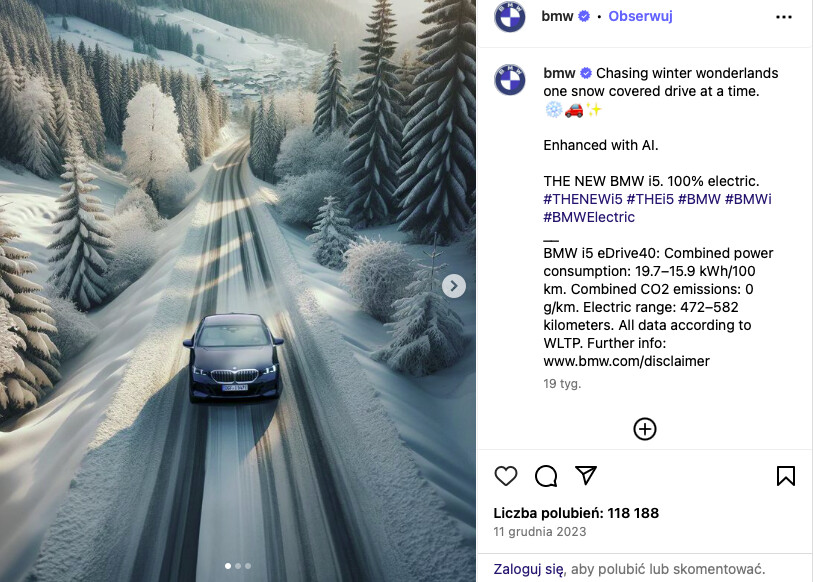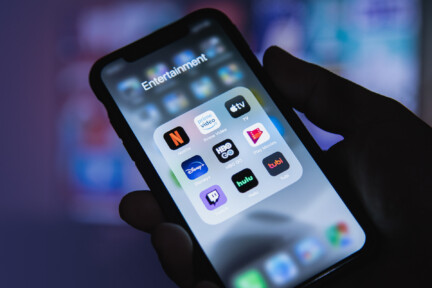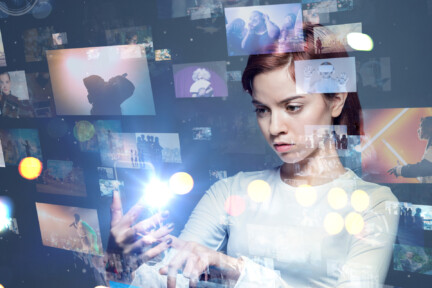An active social media presence is the heartbeat of your digital identity. But let’s be honest, it’s the social posts’ designs that breathe life into it.
Look at social media feeds like bustling streets; design is the language that grabs users’ attention amid the chaos. By design, we don’t just mean the great images (though they are a core design element). No, we mean the entire aesthetic of your social content, from the color schemes to the text, design styles, and layout.
These design elements, when coordinated, create a well-designed profile that makes users stop and engage with your content. Besides that, you must keep up with the trends to create social content that enhances your online identity and resonates with your target audience at every point.
So, what are the social media graphic design trends you need to watch out for as we step into 2024? Read on to learn some of the design choices you will need to make.
Social Media Design Trends 2024 Forecast
Social media design trends change with the times. For instance, 2023 has seen so many brands embrace AI-generated art thanks to text-to-image AI models like DALL-E and Midjourney. What will it be in 2024?
AI designs
AI has proven to make work easy and help create designs that would have otherwise been impossible. So, despite the opinions for or against Artificial Intelligence (AI), one thing that’s for sure is that it’s here to stay.
Check out these recent AI-enhanced images by BMW.
We will see more designers embrace AI assistance in 2024. For instance, we will see even more AI-generated images replace the overused stock images and custom graphics.
You can also expect even better AI designs as AI technology continues to improve.
Color schemes
The entertainment and fashion design industry heavily influenced the 2023 design color schemes. Pastel color palettes were all the rage for a while, influenced by the old-money aesthetic and quiet luxury fashion trends.
Then, the Barbie movie dropped, and there was a shift toward the bold Barbie pink for most of the year.
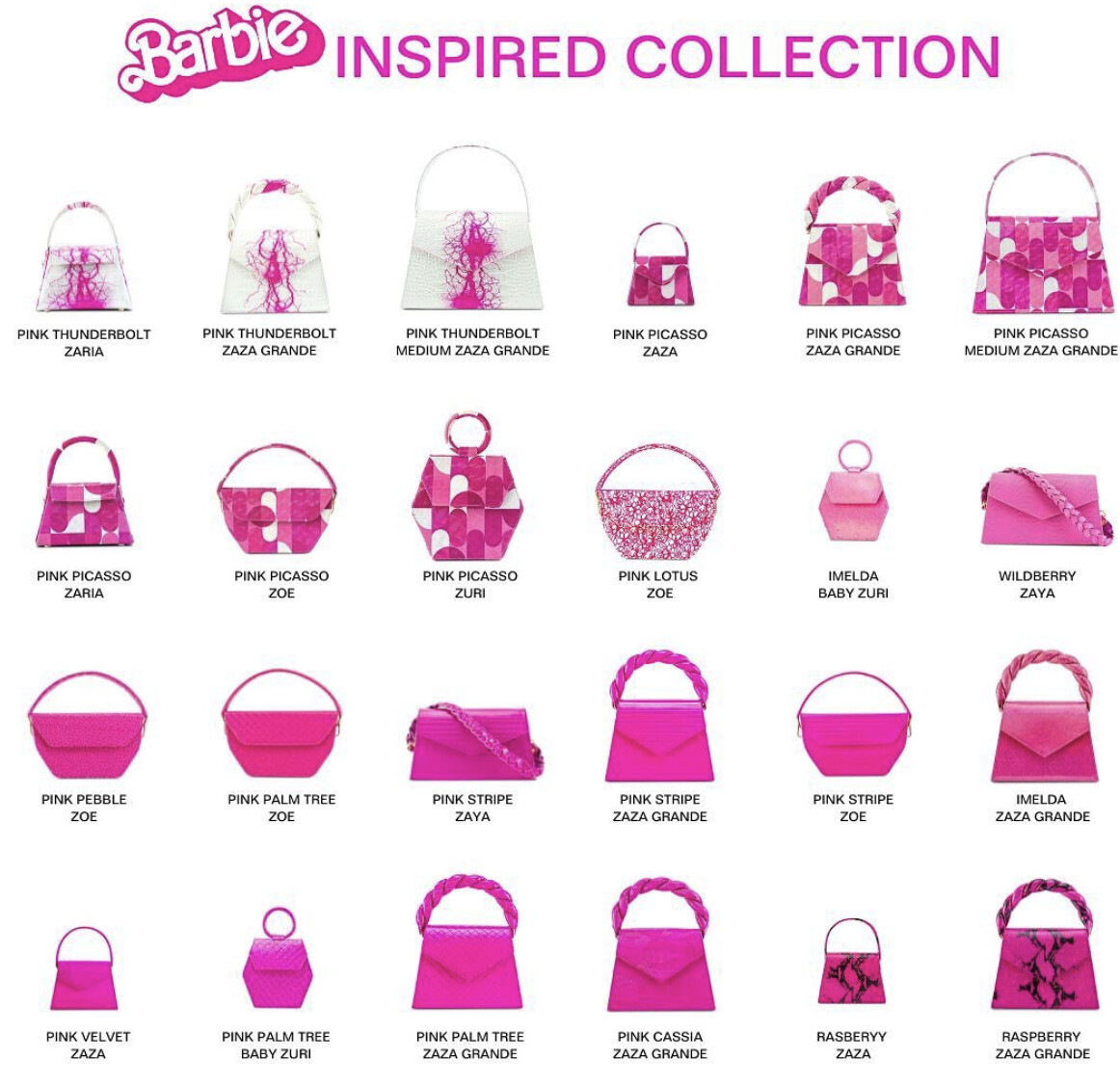
It’s fair to predict that vibrant colors will continue to trend well into 2024. However, they’ve not completely replaced the neutral color palettes, so the color scheme choice will ultimately depend on what your brand is trying to pull off.
Classy typography
Typography in 2024 will probably have a certain level of elegance to match the luxurious and classy aesthetic social media users (especially influencers) have recently been going for.
Think cursive fonts with vintage aesthetics or serif fonts that add a touch of sophistication to your designs.
Nature reference designs
More people are growing climate-conscious, inspiring more nature-reference social media designs in 2024. These designs are typically easier to execute in your packaging designs. However, you can reflect the same in your social media layout using ‘nature colors’ like brown, green, and blue.
Brand illustrations
In 2023, there was a significant shift from the overused stock photography. Custom illustrations are one of the design trends that has replaced stock photography, which will be carried into 2024.
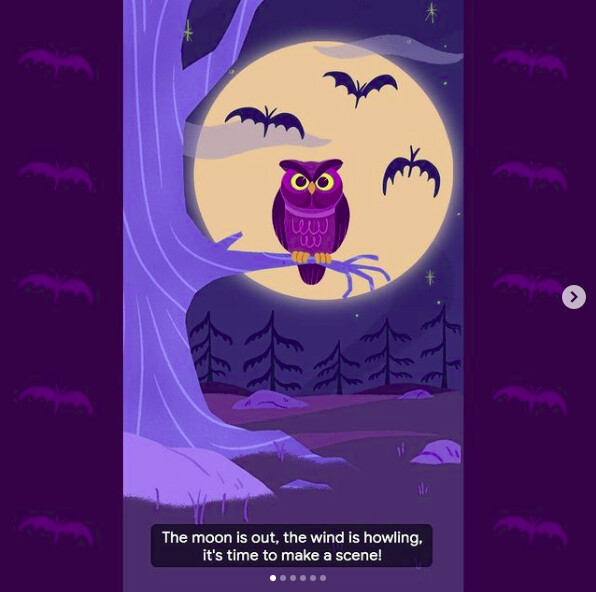
These custom illustrations help brands show their personality, forging more authentic relationships with social media followers.
Asymmetrical layouts
As much as it’s still key to maintain a clean-looking social media profile, users are embracing a less rigid layout where each post does not have to fit a certain aesthetic. In 2024, social profiles will be more creative, using different colors and types of posts, resulting in asymmetrical layouts.
Impact of Design on User Engagement
Social media users scroll through countless posts and images daily, sometimes mindlessly. An innovative design can counter this by grabbing users’ attention through elements like great social media visuals or unique layouts. This makes users pause and explore your content further.
Besides that, design is a powerful storytelling tool. A well-crafted visual narrative will always capture the audience’s attention, whether through static images, graphics, or videos.
Designs can also evoke emotions, building a deeper emotional connection with users. This fosters a sense of attachment and loyalty, prompting users to interact more with your brand’s social profile.
Additionally, consistent design elements ensure brand recognition. Users are more likely to engage with content from brands they recognize and trust.
Technology Integration in Design
Technology integration in social media design is a dynamic aspect that continually shapes social media user experiences. Integrating emerging technologies like AR, VR, and AI allows designers to create more immersive and interactive experiences for users.
Designers use AR/VR technologies to create 3D product designs. These designs allow users to interact with the brand more intimately.
For instance, VR technology lets you create captivating narratives and interactive virtual showrooms. You can leverage AR for virtual try-ons, allowing users to interact with products in a virtual space. See how Maybelline does this.
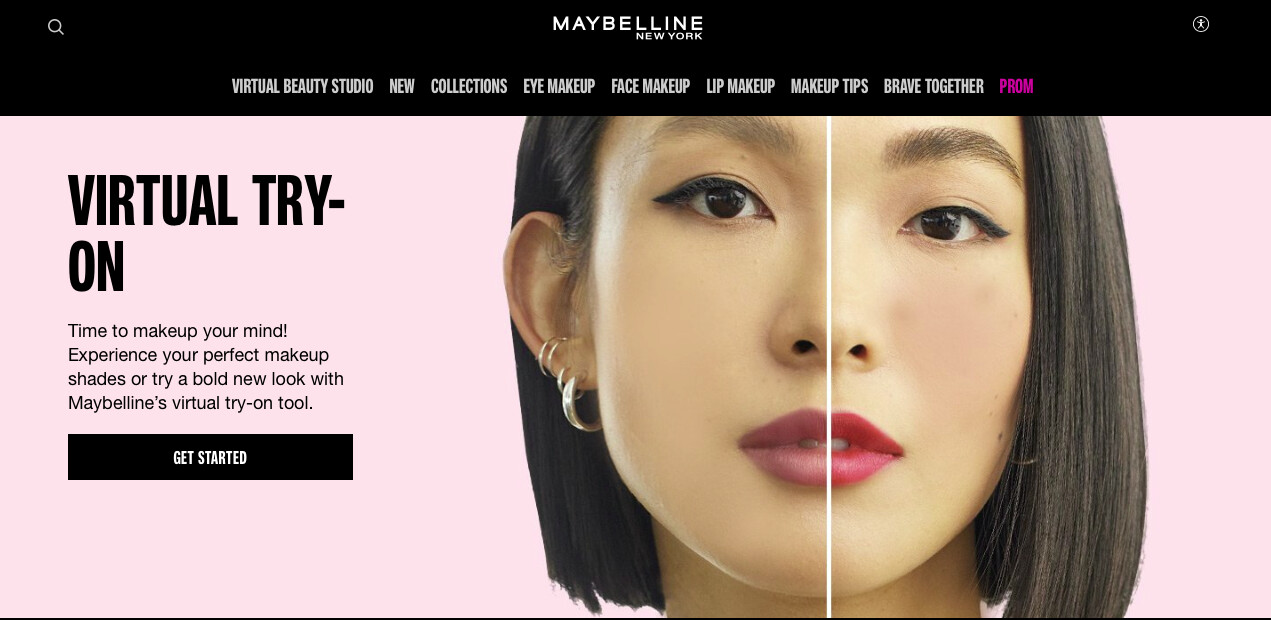
AI-driven design tools are another transformative force that has been automating the content creation and design process. These tools use machine learning algorithms to analyze user behavior and preferences. They can even analyze emerging social media trends.
Then, with the help of a UI design company, you can use the data from this analysis to create tailored designs.
Interactive elements like animations, videos, and infographics have also become increasingly popular in social media design. These key elements capture the user’s attention and convey information more engagingly.
As in our social media design trends 2024 predictions above, these technologies will only get more advanced and popular among designers.
Accessibility and Inclusive Design
There has been a broad shift towards inclusivity in society in recent years. More consumers will only buy from and interact with brands that include and represent them.
Therefore, accessible and inclusive designs are no longer just UI UX design trends or a web developer’s domain; social media managers should implement them, too. Here are the reasons why:
Accessibility ensures individuals with disabilities can fully engage with your social media content. This is key since over one billion people globally experience some form of disability.
You can implement accessible designs through features like alt text, video captions, accessible text, voice commands, keyboard navigation, and video transcripts.
Inclusive design principles are crucial for cultivating a sense of belonging and representation.
Social media is a global platform with people from different backgrounds, cultures, and identities. Using inclusive design elements like gender-sensitive language and diverse representation shows a commitment to diversity and respect for all users.
Visual Storytelling Evolution
Visual storytelling has come a long way from paper to screens. Social media has greatly contributed to this growth. So, how can you expect visual storytelling to evolve with the major trends?
Expect short-form video content, which has grown popular on social platforms like TikTok and Instagram (Reels), to continue dominating social media. This format demands brief, visually engaging storytelling that captures attention quickly.
Social media creators and brands, especially on TikTok, even create miniseries content that keeps followers hooked, as shown below.
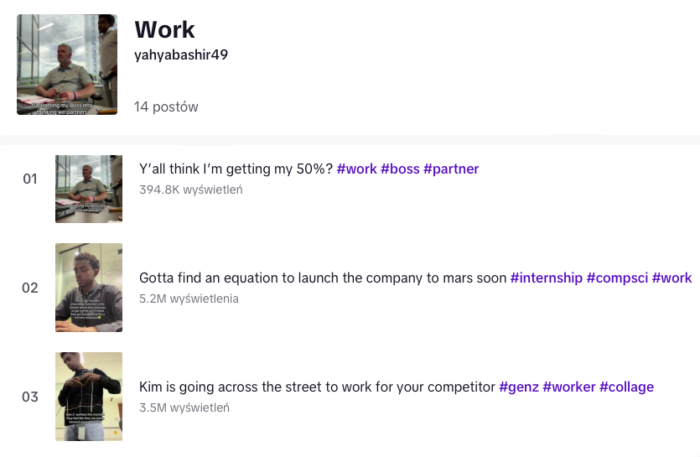
Incorporating virtual and augmented reality will also take visual storytelling to new heights. With the help of UX/UI design tools, social platforms will most likely introduce advanced features that provide immersive experiences and help users explore virtual spaces.
You can also expect AI to be more prominent in creating visual content. AI algorithms, as we mentioned earlier, will help generate more personalized visuals and design elements.
Additionally, the increased emphasis on inclusivity will encourage more diverse representations.
Animation and Motion Graphics
Animation and motion graphics are a valuable asset for content creators looking to stand out. The moving elements and vibrant colors in this type of content draw users in and entice them to engage with the content.
Besides being attention-grabbing, the two are also invaluable for graphic designers looking to visualize complex concepts and simplify intricate data. They enrich your social media content and make it more digestible and entertaining.
Animation and motion graphics also help portray emotions and moods through characters, movements, dynamic text, and visual effects. This helps forge a stronger connection between the content and its target audience.
You definitely want to introduce these two content types in your social media content calendar in 2024.
Personalization and Customization Trends
Like other channels, social media is shifting from sharing generic content to more user-centric and individualized digital experiences. Your brand should do the same with its target audience.
You can start by creating custom typography. By tweaking existing fonts or creating new ones, your brand can add a unique personality to its designs. So, don’t shy away from being creative with your fonts.
You also want to personalize the copy in your designs. Speak your target audience’s language and use appropriate tone and style. Don’t forget to follow the UX writing rules to create the perfect copy.
Like the one shown below, personalized avatars and stickers are the other social media design trends.

These design elements keep profiles visually interesting and allow users to express themselves in unique, relatable, and more engaging ways.
Sustainability in Digital Design
Brands, like most consumers, are becoming environmentally conscious. This has pushed more companies to adopt sustainable practices. But how can you do this as a social media graphic designer?
You may start by using optimized file formats, efficient coding, and image compression to reduce the overall carbon footprint associated with content delivery. By implementing these practices, your brand can align itself with growing consumer demand for eco-conscious and responsible businesses.
Implementing sustainable design practices also involves prioritizing accessibility and inclusivity. By ensuring that digital content is accessible to a diverse audience, designers minimize the need for continuous updates and redesigns. This reduces the overall environmental impact associated with digital content creation.
Companies that offer UI and UX design services should also repurpose existing digital assets to reduce the need to create new materials. Alternatively, create flexible and scalable components that can be reused across various digital platforms and devices.
Social Media Design Trends 2024 Case Studies
Now, let’s look at examples of successful implementation of popular design trends in social media campaigns.
Dove
Dove is one of the brands that has embraced visual storytelling in their social media campaigns. For instance, they’ve recently been using animations in their #DoveSelfEsteemProject.
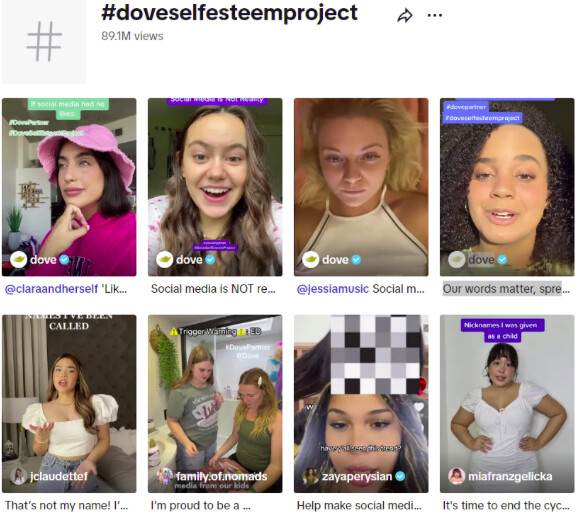
This, along with partnering with social media creators over the years, has earned the social media campaign 89.1 million views on TikTok.
Some of their animated social media posts have also gained thousands of likes on Instagram.
Absolut Vodka
Remember we discussed nature-reference designs and brands that believe in sustainability? Well, Absolut Vodka is one of them.
The brand recently launched a paper bottle, as shown above. You can also tell Absolut Vodka was making a natural reference design from the colors used–green, brown, and blue. This is consistent in all their #AbsolutPaperBottle social media posts.
The brand’s goal is to have a fully bio-based bottle eventually.
Coca-Cola
Coca-Cola has always been a brand that encourages and supports creativity and innovation in different fields. This means they approach marketing very creatively. Therefore, it’s no wonder the brand has embraced the AI trend.
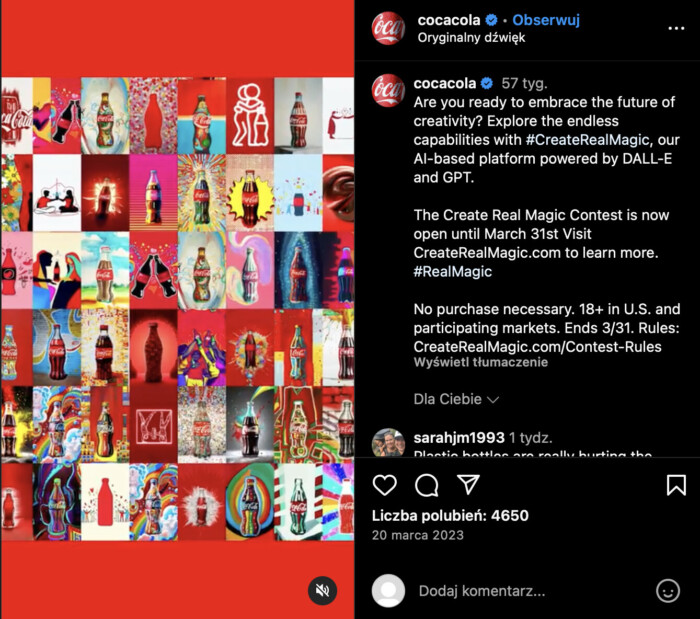
The brand ran a challenge (#CreateRealMagic), where digital artists could experiment and co-create with iconic brand assets. The artists’ work was featured on Coke’s digital billboards, licensed merchandising, and digital collectibles.
All this was done on a custom platform OpenAI and Bain & Company built. The campaign generated more than 120,000 pieces of original artwork.
Miquido’s Approach To Social Media Graphic Design Trends
Miquido has not been left behind. Here are some popular trends we have integrated into our social media strategies and solutions.
For starters, we use lots of motion graphics to enrich our social content. This sets a great example since we offer entertainment app development services.
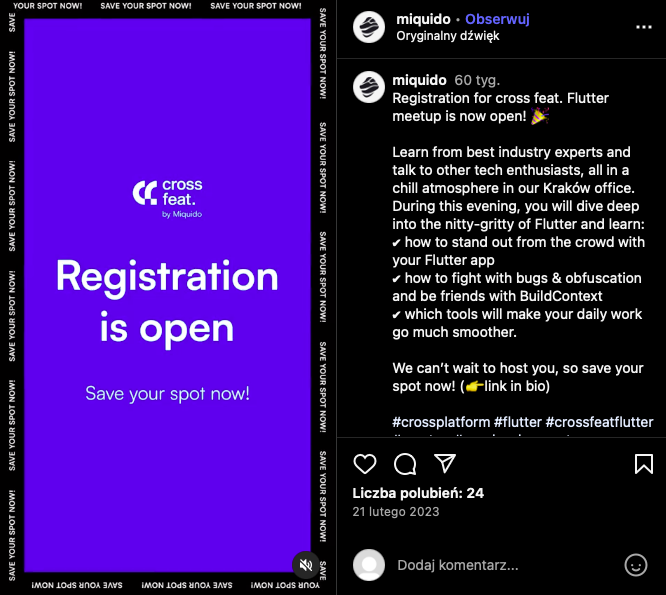
These posts are more visually engaging than static images, and the motion element helps call attention to the key message. This then encourages users to take the desired action.
You’ll also notice that we share lots of short-form videos on Instagram, which keep audiences hooked.
Besides that, our social media layout has taken an asymmetrical path.

Though our posts all align with our brand colors, we mix up the aesthetic and types of content. This approach gives us more room to be creative with our content.
Designing for Impact: Social Media Graphic Design Trends
As we usher in 2024, we can’t expect things to stay the same. The year will bring new developments with it. You’ll need to understand the expected social media design trends to stay ahead of the curve.
Some of these trends include better AI designs, classy typography, nature-reference designs, brand illustrations, and asymmetrical layouts.
Remember, designing for impact means not only staying ahead of trends but also understanding the human experience. So, ensure you create inclusive, accessible, personalized, and sustainable designs.
Over to you. Go ahead and capture the attention and hearts of your target audience with your social media designs. All the best!


